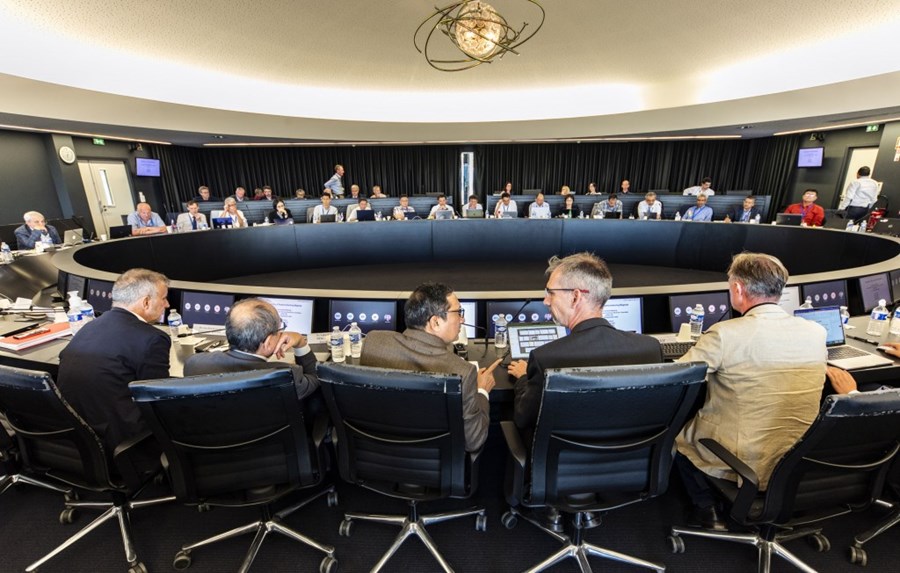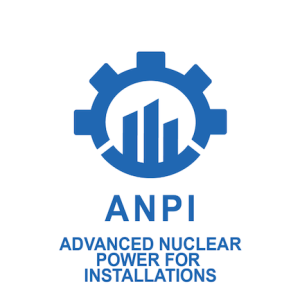 The ITER Council Science & Technology Advisory Committee (STAC) recently met at the Headquarters of the ITER Organisation to review new plans for construction and operation proposed by ITER and Member's Domestic Agencies. This was the first in-person STAC meeting after a hiatus of almost four years caused by the pandemic.
The ITER Council Science & Technology Advisory Committee (STAC) recently met at the Headquarters of the ITER Organisation to review new plans for construction and operation proposed by ITER and Member's Domestic Agencies. This was the first in-person STAC meeting after a hiatus of almost four years caused by the pandemic.
The International Thermonuclear Experimental Reactor (ITER), under construction in Saint-Paul-lès-Durance in southern France, is a first-of-a-kind global collaboration. Construction of ITER is funded mainly by the European Union (45.6%) with the remainder shared equally by China, India, Japan, Korea, Russia and the USA (9.1% each). However, in practice, the members deliver little monetary contribution to the project, instead providing ‘in-kind’ contributions of components, systems or buildings.
STAC advises the ITER Council on science and technology issues that arise during the course of ITER construction and operation. The new plans reviewed by STAC have been elaborated in part to minimise the impact of the repairs of the vacuum vessel and thermal shields on nuclear operation. In November 2022, defects were identified in two key tokamak components during assembly ITER director general Pietro Barabaschi said that the problems would result in more delays to the project. ITER's previous target was to create the plasma by 2025 but Barabaschi said it would have to be postponed. The two problems were incorrect sizes for the joints of blocks to be welded together for the installation's 19 x 11 metre chamber. The second was traces of corrosion in a thermal shield.
The new plans were also intended to provide a more robust path to ITER licencing and to the routine demonstration of the Q=10 goal.
ITER is designed to yield in its plasma a ten-fold return on power (Q=10), or 500 MW of fusion power from 50 MW of input heating power.
In this new approach, ITER operation is proposed to be divided into three main phases:
- Augmented First Plasma (AFP): In this phase ITER will be equipped with inertially cooled plasma facing components in the critical areas of the first wall, which will allow demonstration of 15 MA operation and the commissioning of all required systems, including the disruption mitigation system with low operational risks. Deuterium plasmas with high confinement (H-mode) will also be demonstrated.
- DT-1: In this phase ITER will be equipped with a fully water cooled first wall and additional heating power of 33 MW neutral beam heating, 67 MW of electron cyclotron heating (ECH) and 10-20 MW of ion cyclotron heating (ICH). This phase will explore high confinement plasmas at high levels of plasma current in deuterium and deuterium-tritium plasmas culminating in the demonstration of reproducible operation of Q=10 burning plasmas within an accumulated neutron fluence of approximately 1% compared with the final ITER project goal.
- DT-2: In this phase ITER will be in its final configuration with the objective of demonstrating Q=5 long-pulse and steady-state scenarios and routine operation at high Q with high fluence neutron production. This will allow the study of physics scenarios and technological choices for future electricity-producing fusion reactors.
To support these operational phases the configuration of the ITER device and its ancillaries will be modified. These modifications include a change of first wall material from beryllium to tungsten, which is foreseen to reduce the retention of tritium inside ITER's vessel and the production of dust, and to increase the resilience of in-vessel components to disruptions. Since a change from beryllium to tungsten can increase the cooling of the plasmas and decrease fusion power production, this change is accompanied by risk-mitigation technical modifications to ITER ancillary systems. These include the introduction of systems to deposit films of boron to maintain good vacuum conditions and to cover tungsten components, if needed, and an increase of the power available to heat the plasmas with a change of proportion between ECH and ICH radiofrequency heating from that assumed in the 2016 ITER
With regards to the AFP/DT-1/DT-2 outline operational plan, STAC found the plan compelling and recommended that this outline plan be adopted for the further articulation of the new ITER Research Plan to be elaborated by the ITER Organisation and Members' experts. STAC also noted the new approach to a staged licencing of ITER through the three operational phases above, and endorsed this new strategy and the principles upon which it is based.
STAC also reviewed progress and the strategy for the construction of the ITER Tokamak including the repair of vacuum vessel sectors and thermal shields. STAC found the proposal to perform cold testing of the magnets to be important to mitigating technical risks and recommended that, if possible, all the toroidal field coils and poloidal field coil No.1 should be tested.
ITER's Deputy Director-General for Science & Technology Yutaka Kamada, said: "The ITER Organisation is now fully confident that the New Baseline represents a robust approach to completing ITER construction and its licencing as well as for its scientific exploitation to demonstrate the project's fusion goals.”
In the coming weeks, the ITER Council Management Advisory Committee (MAC) and the ITER Council will have review and comment on the new plans with the objective of submitting a final version of these plans for review and approval by the ITER Council in 2024.
Image (courtesy of ITER): The STAC advises the ITER Council on science and technology issues that arise during the course of ITER construction and operation. Foreground, centre: STAC Chair Shishir Deshpande sits with ITER Organization representatives (left) ITER Director-General Pietro Barabaschi, ITER Deputy Director-General for Science and Technology Yutaka Kamada, (right) Simon Pinches (Plasma Modelling & Analysis Section Leader), and Jens Reich (Machine Assembly Program Manager).






